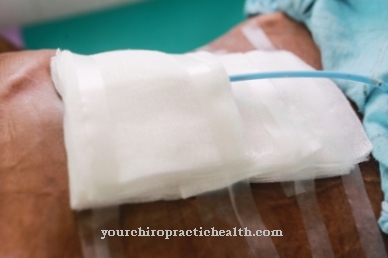A Implant is an artificial material that is implanted in the body and remains there for a long time or permanently. A distinction is made between functional, plastic and medical implants.
What is an implant?

Implants are artificial products that are introduced into the body for various reasons. Medical implants replace or support certain body functions. These include, for example:
- Pacemaker
- Vascular prostheses
- Stents
- Joint replacement
- Retinal implants
If parts of the body have been destroyed or if parts of the body are to be enlarged, so-called plastic implants are used. For example, implants for breast enlargement are very well known. Functional implants such as RFID chips are transplanted to monitor humans or animals.
Function, effect & goals
Implants fulfill optical, functional or medical purposes and support various body functions or completely replace some functions. Nowadays there are implants for almost all regions of the body. For example, knee or hip implants can replace a function that the body can no longer fulfill. Breast implants, on the other hand, are mainly used for beautification. The choice of material plays a very important role here so that the implant is not rejected by the body.
Plastics are often used, but human tissue is now also being implanted. Many implants were only created in the last few decades, including the pacemaker, which is used for all cardiac rhythm disorders. A pacemaker consists of a housing with a battery, where an impulse is generated, which is then sent to the heart by means of a probe and regulates the heartbeat there. However, if the heart fails completely, it is possible to replace it with an artificial heart. However, it is not suitable for permanent use and can only remain in the human body for around nine months. Another important implant is the stent, which is used for constricted vessels.
A stent is a small tube made of plastic mesh that is pushed into the pathways and adapts to the veins there. Patients who need to be given medication are very often given a so-called port catheter, which is implanted under the skin. This technology gives the doctor very quick access to the bloodstream so that no injections have to be placed. If the retina loses its function, it is possible to insert a retina implant. There are two different ways of doing this: In an epiretinal procedure, the implant is attached to the retina, but the image itself is generated by a camera that can be found in glasses.
In a subretinal procedure, the surgeon places the implant behind the retina, which makes it possible to restore eye function. If signs of wear and tear are found on the joints, endoprostheses are used, implants that remain in the body permanently. However, this is usually only the case if medication or physiotherapy did not produce the desired result. The operation here is relatively complicated as the surgeon must first remove the affected joint. Then the artificial joint is fixed and the joint head is adjusted. Placing a dental implant is relatively uncomplicated. This procedure is usually performed on an outpatient basis; general anesthesia is not necessary. A dental implant consists of two elements: a metal shaft and a head.
The surgeon first removes the gums and then drills a hole in the jaw. Then the shaft is inserted and the head screwed on. Breast augmentation primarily fulfills cosmetic aspects, but it is also carried out for various diseases. A silicone pad that can stay in the body for several years is often used for this purpose. Newer methods use autologous fat to shape a breast. Tissue is taken from the thighs or abdomen and then inserted into the woman's chest.
After a mastectomy, breast reconstruction with an implant is often performed. The implant is inserted either in front of or behind the chest muscle, so it is important that the muscle can be preserved during an amputation. Before the reconstruction, the doctor inserts an expander into the chest so that the tissue can be stretched. The actual operation then takes place after about six months. Implants do not always have a purely medical purpose. RFID chips, for example, are small memories that contain important data about a person and are implanted under the skin.
You can find your medication here
➔ Medicines for painRisks, side effects & dangers
Of course, an implant always carries different risks. Transplanting an artificial heart can lead to various physical complaints such as thrombosis, and the risk of a stroke increases. Patients with a stent usually have to undergo another operation after a few years because the vessels can close again.
A port catheter normally lasts around five years, but inflammation sources can rarely occur here or the catheter is rejected by the body. Any thromboses that occur can be treated with medication. If patients receive a joint replacement, they have to undergo an operation lasting several hours. Thromboses and hematomas can occur. However, in most cases the side effects are minor and the majority of patients are satisfied with the new joint.
Breast implants are still fraught with dangers. This can lead to pain or deformations that occur if, for example, silicone leaks. In this case, you should therefore carefully consider whether an increase is really necessary.













.jpg)

.jpg)
.jpg)











.jpg)